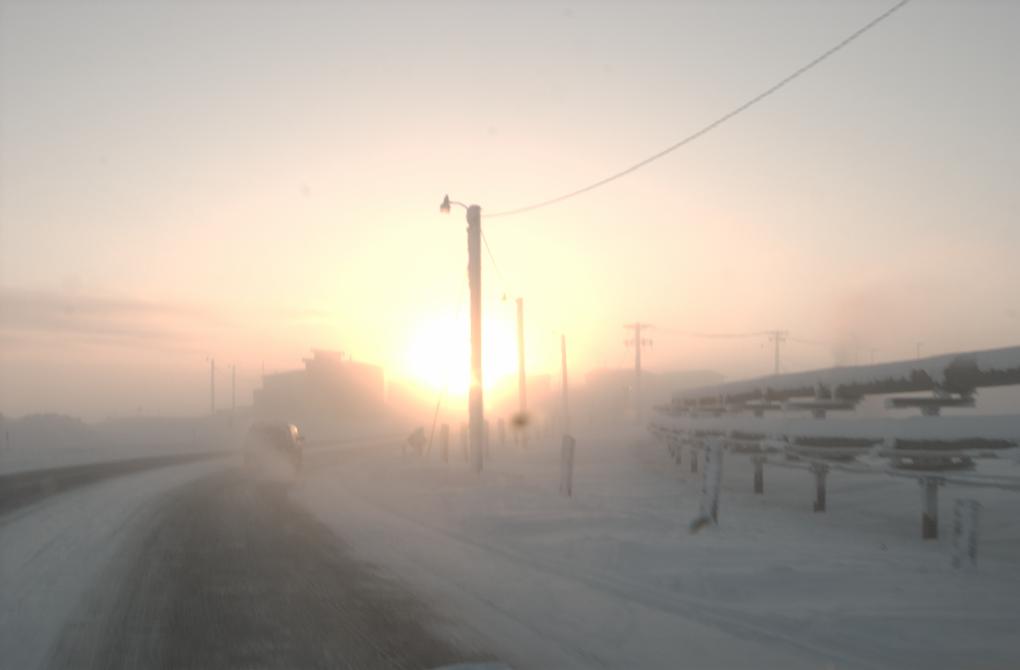
Fog in the general sense of the word a cloud that is very close to the ground (such that it decreases visibility). Fog consists of water droplets suspended in air and occurs when water vapor is condensed.
Ice fog is fog that consists of small ice crystals rather than water droplets and is a comon occurrence in urban arease at temperatures colder than -35 C. In urban areas, ice fog is often the result of water vapor condensation coming from man-made sources such as automobile exhaust.
Ice fog is formed for instance, when the water vapor escaping from temperatures above the vaporization temperature reaches -40 C in a matter of seconds.

Photo source: International Arctic Research Center, University of Alaska Fairbanks
Ice crystals come in spherican and hexagonal fomrs. Spherical crystals are general 5 micrometers. Crystals may settle to the ground and form a very light layer of precipitation.

Photo source: Geophysical Institute, University of Alaska Fairbanks
Ice fog results in some unique optical effects such luminous pillars and small halos. The following is a photo of the Sun shining through the ice fog in Barrow, Alaska.

Photo source: Floyd Davidson